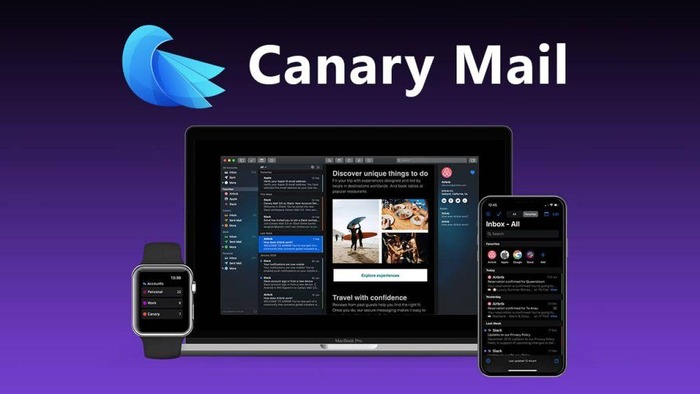In the world of email clients, two names often stand out: CanaryMail and Airmail. Both have garnered attention for their unique features and user-friendly interfaces. But how do they stack up against each other? Let’s dive deep into a comparison based on various sources.
1. Overview
CanaryMail: CanaryMail has carved a niche for itself as a robust and secure email client tailored for modern users. Designed with an intuitive interface, it seamlessly integrates with both Mac and iOS platforms, ensuring a consistent user experience across devices. Beyond its primary function as an email client, CanaryMail’s emphasis on user privacy and data security sets it apart.
With the increasing concerns about data breaches and cyber threats, CanaryMail’s commitment to end-to-end encryption offers users peace of mind. Compatible with a range of popular email providers, including Gmail, iCloud, and Office 365, CanaryMail ensures that users don’t have to compromise on security while enjoying the convenience of a unified inbox.
Its features, such as smart filtering, natural language search, and a one-click unsubscribe option, further enhance its appeal, making email management a breeze.
Airmail: Airmail is not just another email client; it’s a testament to what a lightweight and efficient email client can achieve. Crafted specifically for Mac users, Airmail’s design ethos revolves around speed, efficiency, and customization. Its lightning-fast performance ensures that users can navigate their inboxes without any lag, making it ideal for those who deal with a high volume of emails daily. Airmail’s adaptability is one of its standout features.
Whether you’re a casual user or a power user, Airmail can be tailored to fit your needs. Its integration capabilities are commendable, allowing users to connect with various apps and platforms effortlessly. While the basic version offers a plethora of features, Airmail Pro and Airmail for Business take it a notch higher, catering specifically to professionals and businesses that require advanced functionalities. For those considering other options, it might be worth checking out some airmail alternatives.
2. User Reviews
According to G2, Airmail has received a rating of 3.6/5 stars, while CanaryMail boasts a 4.2/5 star rating.
On Slant, users have highlighted Airmail’s customization options and integration capabilities. In contrast, CanaryMail has been lauded for its security features, especially its end-to-end encryption.
SaaSHub mentions that Airmail is a great Mac email client, with its basic features being free. However, Airmail Pro and Airmail for business purposes come with a charge. CanaryMail, on the other hand, is recognized for its security features, with some reviews noting it as a good choice for Mac users who prioritize security.
3. Features and Integrations
Both email clients offer a range of features tailored to enhance user experience. Airmail provides a seamless integration with various apps, making it a versatile choice for those who rely on multiple platforms. CanaryMail’s standout feature is its end-to-end encryption, ensuring that user data remains private and secure.
According to SourceForge, both Airmail and CanaryMail offer API integrations. They are also compatible across multiple platforms, including Windows, Mac, Linux, and SaaS/Web. Both have business hours support, with CanaryMail also offering 24/7 live support.
4. Pricing
Airmail’s basic features are available for free, but its Pro version costs $2.99 per month. CanaryMail, on the other hand, starts at $20/month. Both offer free trials, allowing users to test out their features before committing.
5. Conclusion
Choosing between CanaryMail and Airmail boils down to individual preferences and needs. If security is a top priority, CanaryMail, with its end-to-end encryption, might be the better choice. However, if you’re looking for a lightweight client with extensive integration capabilities, Airmail could be the way to go.
In the end, both email clients offer robust features that cater to different user needs. It’s essential to assess what you value most in an email client and make an informed decision based on that.
Certainly! Here are the sources used for the article:


